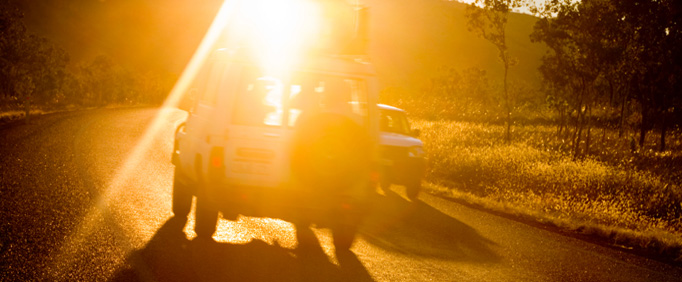12. Give them context. I had a former student that told me he could never ever put a knife into somebody under any circumstance. I told him I could change his mind in less than one minute. He laughed. I asked to visualize, really clear and detailed imagery, a just- released violent criminal. Inhumane. Non-empathetic. Vile. No regard for human sanctity and precious human life. (Not evil incarnate, inhuman or a mindless killing machine as this takes away the humanity and if it can bleed, it can be destroyed.) He was coming home from a long day at work, the only thing on his mind seeing his beautiful wife and cute kids. He walks in to see his kids unconscious and bleeding on the floor. His wife has her mouth muffled by a hand and this guy is on top of her ripping her clothes off. There’s a knife laying on the dresser and there’s one thing standing between her and your kids’ lives…you. He will not stop and there are no police coming to help you. She’s looking at you with horrified eyes and the life slowly leaving them. Could you put a knife in somebody? (Now I know this is extreme, unlikely to happen for the vast vast majority and a horrible vision to have to picture but it goes toward context and the ability and moral/ethicaljustification within that context and to achieve scenario-specific goals…remember, the vast majority of us are deeply hardwired for resistance to taking human life….and this is a good thing, rendering a lot of what we learn in “martial arts” and “self-defense” moot…semantics are simply not semantics pertaining to violence) I saw his body language change during the process…red face, clenched fists, body rocking, smile vanished and a look of glaring intensity. He said “yes, under those circumstances I’d be able, without doubt.” It turned out to be about 90 seconds but you get my point. That’s context. Visceral imagery. We don’t train to stab a guy at the bar that accidentally (or not, for that matter) dumps a beer on us. We too often teach universal or general in a specific. Poor conditioning. (hardwiring is already there so this is not hardwiring, it’s conditioning…we’re altering the hardwiring)
13. Mantras reinforced to develop proper mindset. Here are a few examples that I use: “When all else has failed and there is no other solution than a physical response, I will be brutal, unforgiving and unempathetic in my attack until the threat has subsided. I will dominate with incredible speed and power, both of mind and body.” “I will learn to function with adrenaline dump and will overcome my fear and use adrenaline as power.” “I will do whatever it takes to survive, thrive and live for my loved ones.”
14. Learn targeting, not sequencing. Don’t have a specific response for a given attack. Train yourself to always see targets. They are ALWAYS available from ANY position. Ones that do damage, that create shock and awe, that give psychological trauma, that cause injury and inflict brutal pain..now…not later that evening.
15. Don’t (even unintentionally) put weapons in their hands and have them dismantle an unarmed fighter. A. It’s illegal and you’ve just taught them unbeknownst to them (and often unbeknownst to the blank instructor) to escalate the level of force exponentially given the circumstances. B. You’ve gone against the average person’s innate resistance to utilizing this type of violence on another human being. C. You’ve messed with their context and unconsciously given them a skillset most are simply unable to process, especially without that specific context.

16. No tapping or submission training. It is self-defeatist. If a student perpetually learns to tap when things start to hurt or as a “safeword” you are conditioning them to fail. Teach them to read body language so they know when they’re hurting someone, facial reaction. I once had a friend who had been training with some law enforcement friends on the weekends. They did BJJ and every time (he was a big guy so it took some effort on their part) he said they’d end the wrestling match with a rear naked choke and told him that there was no counter…once that was on, it’s over. He asked if I had any solutions. I told him, “tap.” He said, “Well, yes, then I’m done and the fight’s over. What can I do to counter once I’m caught?” “Tap.” “You’re not getting it, D, I need a counter.” I told him “I’m giving you one, you’re just not listening. Tap. They release instinctively, it’s how they’re trained. They’ve done it hundreds of times and, by now, it can’t be overrun. Tap. And when they release, attack them like a hungry f*$#ing tiger.” The lights went on. “But that’s dirty.” “I know, you’re right, it is. Do you want the counter or not.” “But we’re friends!” “Not during a real fight you’re not. You wanted a counter, take it or leave it. It will put you on top, they won’t be expecting it and the appalling shock of you not playing by their rules will put them on their heels while you get the first few shots in. That’ll change the bloody dynamic of the game. Permanently. They’ll never make that mistake again even while on the job. It’ll help you in the immediacy, them in the long-term. Everybody wins.” “Jesus, Darren, it’s just grappling with beers on the weekend!” “Yeah, well, that’s the difference, I look at it from a different mindset, I try and be a problem-solver. You had a problem , I gave you a way to solve it. It’s not pretty, it’s not nice but, dammit, it sure is effective, isn’t it?” Tools like visualization allow the student to go through the steps needed to end the scenario, whether it be verbal, physical, intuitive, psychological, tactical or what have you. Have them do it successfully in their mind’s eye. Then have them do it with ugly success. Then imperfectly and with flaw. Then have them develop a plan b or a perpetually-adaptive method when their first avenue doesn’t work as planned. They aren’t given one-size-fits-all solutions, they’re given tools to adapt to the changing playing field. It will forever help them, in life or in the fire. Until what point to continue the assault? Until the threat ceases to be a threat if all else has failed and the physical is all that’s left. No gloating, no admiring your shots, no yelling in victory, no stopping. No re-dos. Dear God, if you want to get Darren mad, ask for a re-do. “That didn’t look good, stop and let me try that again.” Um..no. Billy, keep attacking Jimmy, please. Learn to thrive in the unpredictability of chaos. It’s human to be hit, to err, to screw up and have something look ugly. (Remember, if I do anything that looks absolutely beautiful, it’s by accident, not intent) Teach them to become focused, pragmatic and goal-oriented. Means to an end. Make your training your reality: a. Growl. Learn to become feral. Let the inner animal loose every so often so you know what he or she looks like and can recognize him or her when he/she’s needed. b. Train biting, pinching, scratching, twisting, tearing, ripping, clawing. Then practice counter-biting, counter-pinching, counter-scratching, counter-twisting, countertearing, counter-ripping, counter-clawing. c. Learn the physiology of that animal. What does he look like now that you recognize him? How do you access that state change on a dime when needed? What are the things that matter to you? Your trigger points? What’s worth fighting for and what is not? This is the definition of flipping/flicking the switch. It’s often paid reference to but very rarely explained. Plan before when it’s okay for him/her to come out and play ahead of time…during is too late. Again, the whats are usually what are stressed, not nearly enough of the hows, whens and whys. Eyes roll back in head, immense power runs through your body, a viciousness takes hold, something snaps. Look in the mirror and see what he looks like. Get a visual, auditory (what does he/she sound like? things he/she says? tone and intensity?), kinesthetic and tactile processing in place. Practice brings it to the fore, then returning back to the you that your loved ones see every day. Practice seeing how fast you can access Mr. Hyde from Dr. Jekyll. Again, use context. What matters to you? Who’s important? What would have to be done to them or you to pull Mr. Hyde out of the closet? Remember, he’s not you, he’s a part of you that only comes out when absolutely needed, not when your wife nags you or the kids are misbehaving. It’s okay to have him, it doesn’t make you an awful person as he has a voice, a rare one, but a powerful one nonetheless.

Context is bloody king. Remember, it’s not the system, the belts, the techniques but the will to utilize the tools necessary if and when needed. Mindset. The mind is by far the most dangerous weapon we possess.
This is just the tip of the iceberg and I’m often reticent to share openly information like this as it is both controversial and can be misused, from someone who understands and moreso from someone who doesn’t. I have been pushed by some close confidants to put it out there as, who better than someone who uses the methods responsibly and with care to explain it with caution as opposed to someone egregious and negligent. High praise, let’s see what comes of it.










